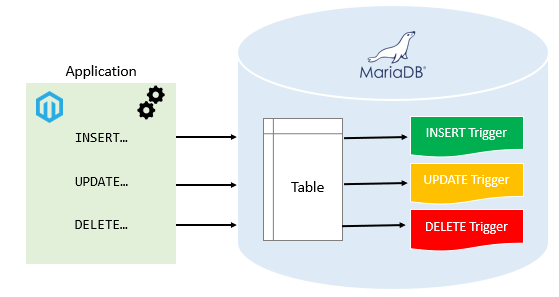Mariadb Trigger
MariaDB is an open-source relational database management system that is a fork of MySQL. Like MySQL, MariaDB also supports triggers – special stored procedures that are automatically executed when certain events occur in a database. Triggers can help automate tasks, enforce constraints, and maintain data integrity.
In this article, we will explore the concept of triggers in MariaDB, how to create them, and some best practices to keep in mind when using triggers in your database.
Creating a Trigger
To create a trigger in MariaDB, you use the CREATE TRIGGER statement followed by the trigger name, the event that triggers the execution of the trigger (e.g., INSERT, UPDATE, DELETE), the table on which the trigger operates, and the trigger body or action.
Here is an example of creating a simple trigger that automatically updates a timestamp column whenever a new row is inserted into a table:
DELIMITER //
CREATE TRIGGER update_timestamp
BEFORE INSERT ON employees
FOR EACH ROW
SET NEW.created_at = NOW();
//
DELIMITER ;
In this example, the trigger update_timestamp is set to execute before an INSERT operation on the employees table. It updates the created_at column to the current timestamp using the NOW() function.
Types of Triggers
In MariaDB, triggers can be classified into three types based on the event that triggers them:
- BEFORE triggers: These triggers are executed before an event (e.g.,
INSERT,UPDATE,DELETE) occurs. - AFTER triggers: These triggers are executed after an event.
- INSTEAD OF triggers: These triggers replace the normal event with the trigger’s action.
Each trigger type has its own use case and can help you achieve different functionalities in your database.
Best Practices for Using Triggers
While triggers can be powerful tools, it is essential to use them judiciously to avoid unintended consequences. Here are some best practices to keep in mind when working with triggers:
- Keep triggers simple and focused on a specific task.
- Avoid using triggers for complex calculations or operations that can impact performance.
- Document your triggers thoroughly to ensure clarity and maintainability.
- Test triggers thoroughly to verify their functionality and avoid potential errors.
- Monitor trigger performance to identify any bottlenecks or issues.
By following these best practices, you can effectively leverage triggers in MariaDB to automate tasks and maintain data integrity in your database.
Overall, triggers are a powerful feature in MariaDB that can help you streamline your database operations and ensure data consistency. By understanding how triggers work and following best practices, you can effectively incorporate triggers into your database design.
